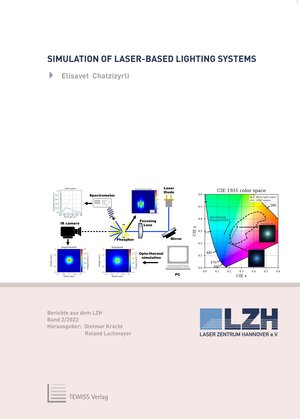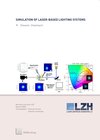
×
![Buchcover ISBN 9783959007481]()
Laser-excited remote phosphor systems are a new technology that has the potential to become the go-to lighting solution, particularly for applications requiring high luminances and luminous powers. However, the temperature dependence of the phosphor material is the performance bottleneck in these systems; the absorption and emission characteristics change with temperature, and after a certain temperature threshold is exceeded, luminescence is quenched. To incorporate these effects into optical system design, a simulation framework that combines optical and thermal analysis tools has been developed: ray tracing software within the geometric optics regime is used in conjunction with heat transfer calculations performed employing the finite element method. The temperature-dependent absorption coefficient, or equivalently the mean free path, the emission spectrum, and the quantum efficiency are all considered while modeling the phosphor material. Furthermore, when appropriate, the possible surface treatment techniques on the phosphor are taken into account by employing an additional surface scattering model. Both steady-state and transient opto-thermal analysis are implemented. In the first case, steady-state analysis can be used to quickly estimate the thermal response of a system given known material parameters, or to perform parameter investigation. Despite the higher computational cost, the latter case is ideal for studying the material response within the thermal quenching regime or for determining material parameters in cases where these are not known a priori. In this thesis, the thermal response of the phosphor for a wide range of pumping powers has been experimentally validated. Temperatures simulated and experimentally measured using thermal imaging techniques are compared in transmissive and reflective setups for polished and/or ground single-crystal phosphor samples. Finally, the opto-thermal simulation framework is used in an optimization scheme, demonstrating that this simulation tool can be an invaluable tool in the design and prototyping of phosphor-converted light sources.



